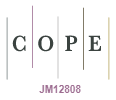Ammonia transport: seaborne tanker loading – technology selection, system design and modelling
Paul Fothergill A * and David Kitson AA

Paul Fothergill is a Study Manager in the Flow Assurance department at Genesis Energies. Paul has over 20 years’ experience in the energy industry. Paul holds a degree in Chemical Engineering (BEng Hons) from the University of Edinburgh, UK. Paul’s experience has primarily been in engineering consultancy, design and operations support in the upstream oil and gas industry in the UK and Australia. Paul has a successful track record of leading process and flow assurance engineering activities throughout the project lifecycle from concept through to detailed design and operations. Paul has recently supported the design of a number of hydrogen, carbon capture and ammonia projects with a specific interest in the design of ammonia export systems. |

David Kitson leads the Subsea and Pipelines team for Genesis Energies in Perth, Australia. David has a Bachelor of Engineering degree in Civil Engineering from the University of Bristol, UK. David has over 25 years of engineering experience in the energy industry, working in Australasia, Asia, Europe and the USA. David’s early career was spent engineering and executing both onshore and offshore installation projects with various engineering contractors. Since joining Genesis in 2018, David has used this extensive, practical, hands-on experience to support a range of clients in finding practical solutions to their engineering challenges from concept select through to decommissioning. Recently, David has worked with several clients in their early-stage concept selection phase to understand options and plan their ammonia export facilities. This subject area brings together David’s broad engineering experience across the onshore pipelines, shore crossings and offshore marine construction. |
Abstract
Ammonia plays a crucial role in the transition to a sustainable economy due to its potential as an energy carrier, fertiliser and industrial feedstock. Low-carbon ammonia can be produced from fossil fuels enabled by carbon capture and storage or electrolysis powered by low-carbon sources. The location of renewable or carbon capture, utlisation and storage low-carbon ammonia projects typically prioritise locations with abundant wind and solar resources and low energy costs or proximity to carbon sequestration resources. However, in Australia these areas are often remote from demand centres and export route to market by tanker shipping is required. Furthermore, there is often no access to existing port facilities, requiring construction of a new seaborne tanker loading system. This paper identifies and assesses the options for ammonia shipping tanker export and loading systems, including jetties and floating offload technologies. The comparative assessment identifies what factors influence the selection of a loading system and where jetties are preferable over floating systems and vice versa. The system design considerations for each type of loading system are assessed, including the thermal design and the impact on the onshore storage, boil-off gas and export pumping requirements. These can influence the selection of onshore liquefaction technologies and cooling requirements. The paper will also present a typical floating export system via a buoy and will outline the subsea system components, including pipeline insulation requirements, definition of operating modes and subsea system functional design.
Keywords: ammonia, floating offload, flow assurance, hydrogen, insulated pipelines, low-carbon ammonia, process design, shipping, subsea.
 Paul Fothergill is a Study Manager in the Flow Assurance department at Genesis Energies. Paul has over 20 years’ experience in the energy industry. Paul holds a degree in Chemical Engineering (BEng Hons) from the University of Edinburgh, UK. Paul’s experience has primarily been in engineering consultancy, design and operations support in the upstream oil and gas industry in the UK and Australia. Paul has a successful track record of leading process and flow assurance engineering activities throughout the project lifecycle from concept through to detailed design and operations. Paul has recently supported the design of a number of hydrogen, carbon capture and ammonia projects with a specific interest in the design of ammonia export systems. |
 David Kitson leads the Subsea and Pipelines team for Genesis Energies in Perth, Australia. David has a Bachelor of Engineering degree in Civil Engineering from the University of Bristol, UK. David has over 25 years of engineering experience in the energy industry, working in Australasia, Asia, Europe and the USA. David’s early career was spent engineering and executing both onshore and offshore installation projects with various engineering contractors. Since joining Genesis in 2018, David has used this extensive, practical, hands-on experience to support a range of clients in finding practical solutions to their engineering challenges from concept select through to decommissioning. Recently, David has worked with several clients in their early-stage concept selection phase to understand options and plan their ammonia export facilities. This subject area brings together David’s broad engineering experience across the onshore pipelines, shore crossings and offshore marine construction. |
References
CSIRO (2025) Projects Spreadsheet. Available at https://research.csiro.au/hyresource/projects/projects-spreadsheet/
DNV (2024) Investing in future ammonia market, Press release, 16 October. Available at https://www.dnv.com/expert-story/maritime-impact/investing-in-future-ammonia-markets/
Geoscience Australia (2024) AusH2 – Australia’s Hydrogen Opportunities Tool. Available at https://portal.ga.gov.au/persona/hydrogen
IEA (2021) Ammonia Technology Roadmap Towards more sustainable nitrogen fertiliser production. (International Energy Agency) Available at https://www.iea.org/reports/ammonia-technology-roadmap
IRENA and AEA (2022) Innovation Outlook: Renewable Ammonia. (International Renewable Energy Agency: Abu Dhabi; Ammonia Energy Association: Brooklyn). Available at https://www.irena.org/publications/2022/May/Innovation-Outlook-Renewable-Ammonia
The Royal Society (RSC) (2022) Ammonia: zero-carbon fertiliser, fuel and energy store. Available at royalsociety.org/green-ammonia
Wang H, Daoutidis P, Zhan Q (2023) Ammonia-based green corridors for sustainable maritime transportation. Digital Chemical Engineering 6, 100082.
| Crossref | Google Scholar |


